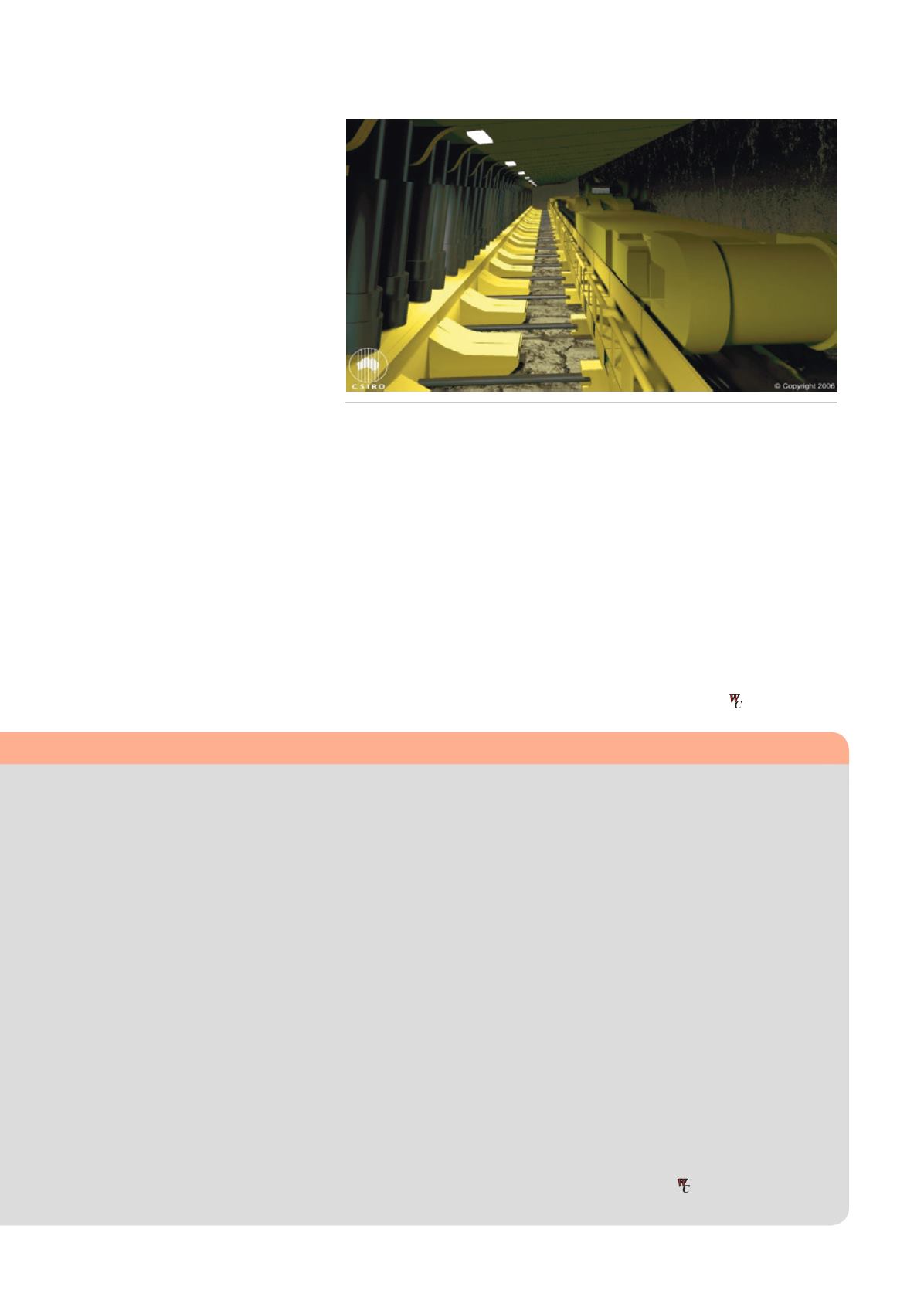
minimises the need for manual face
alignment. Importantly, employee safety
has been enhanced alongside significant
productivity gains. An independent
evaluation, conducted last year byACIL
Allen Consulting, found that LASC
Technology:
n
n
Contributes to improving the
working conditions and safety of coal
mine employees.
n
n
Will likely save mining firms millions
of dollars a year as a result of
improved safety.
n
n
Delivers productivity increases of up
to 10%.
The technology improves productivity
as it facilitates consistency in machine
operation and – in order for the
automation function to work effectively
– all other parts of the mining operation
need to be in peak condition. These
factors, when combined with the
lower risk of accident and injury,
mean fewer process delays and
greater efficiency of the overall
mining operation.
The next step
LASC Technology is a success story for
the researchers and industry
representatives involved in its
development and commercialisation.
Its rapid uptake is a testament to the
safety and productivity gains it delivers,
as well as the cooperation between
CSIRO, ACARP, the industry and OEMs.
The technology’s future is promising,
with newmarkets emerging
internationally and CSIRO researchers
continuing to refine its functionality and
explore new applications.
One application being pursued by
CSIRO is using the technology to
automate the control and navigation of
the continuous miner operations used to
develop longwall roadways. If
successful, this could significantly
improve the speed of roadway
development and enhance safety by
removing miner operators from the
vicinity of the continuous miner.
The continuation of the LASC
Technology research programme brings
the industry closer to realising the fully
‘unmanned face’ and overall operation
of the longwall mine.
productivity, resulting in tens of
millions of dollars in savings each
year.
Control and prevention of
mine fires
CSIRO has developed a number of
innovative concepts for the prevention
and control of heatings and fires in
underground coal mines. The
following set of strategies and
guidelines has been designed to
significantly reduce oxygen ingress
into the goaf, the main reason fires
and heatings occur in longwall mines:
n
n
Inertisation to reduce the potential
explosion risk during longwall
sealing operations and to increase
the rate of goaf inertisation.
n
n
Proactive inertisation to prevent
spontaneous combustion and
heatings in goaf areas during
extraction of longwall panels.
n
n
Inert gas injection flow rates and
injection locations around the
goaf.
n
n
Location of continuous goaf gas
monitoring points.
n
n
Inertisation at inbye locations to
control fires in longwall panels.
A highlight of this research has
been the industry’s response, with
more than 50% of mines prone to
spontaneous combustion in Australia
implementing the CSIRO approach.
Dust control
CSIRO has made significant
contributions to the development of
dust control technologies and methods
that reduce the dust exposure levels of
longwall face operators. These include:
n
n
Improved understanding of
air and dust flow patterns on
longwall faces.
n
n
Strategies for reducing dust
levels during shearer cut-out at
longwall maingate corner.
n
n
Development of a longwall
shearer scrubber prototype and
its successful demonstration in
the field, reducing dust levels by
49 – 56% during field studies.
n
n
Development of dust control
strategies for reducing dust
levels on longwall top coal
caving face.
These developments are
contributing to the mitigation of a
significant health issue caused by the
high levels of airborne dust emissions
associated with longwall mining
operations.
Figure 1. LASC visualisation of an automated longwall face. The 3D positions of
all system components are updated in real time from sensor data, allowing remote
operators to have virtual presence on the face.
July 2015
|
World Coal
|
25


